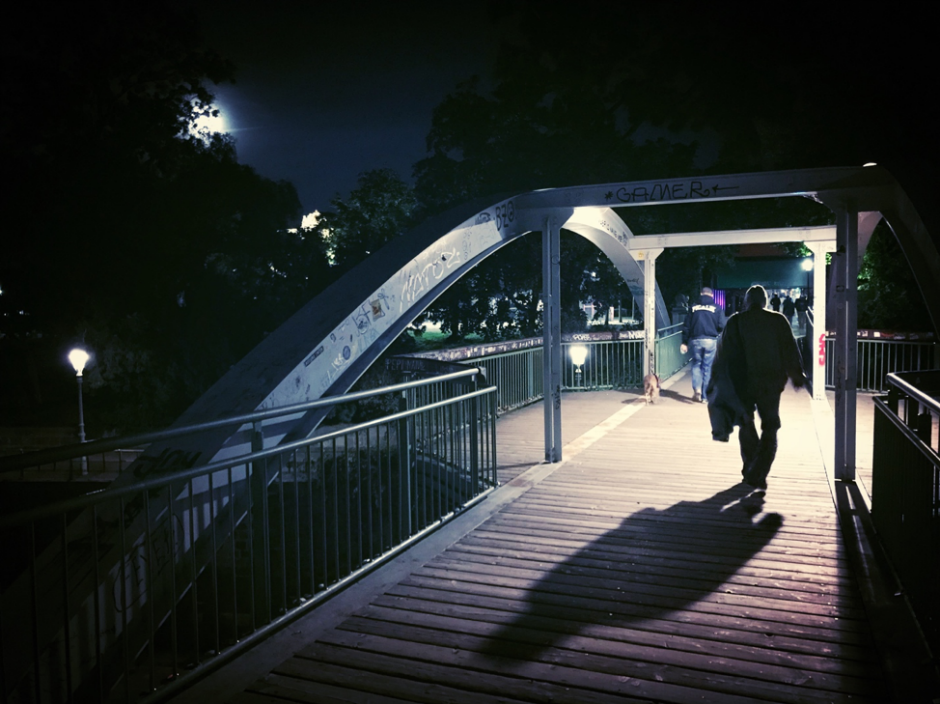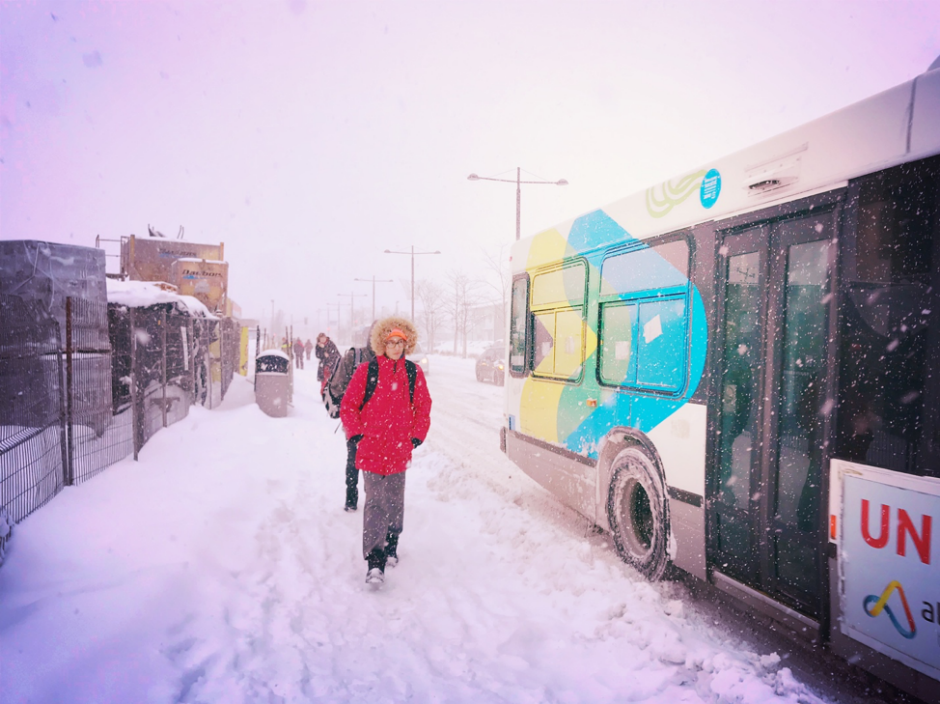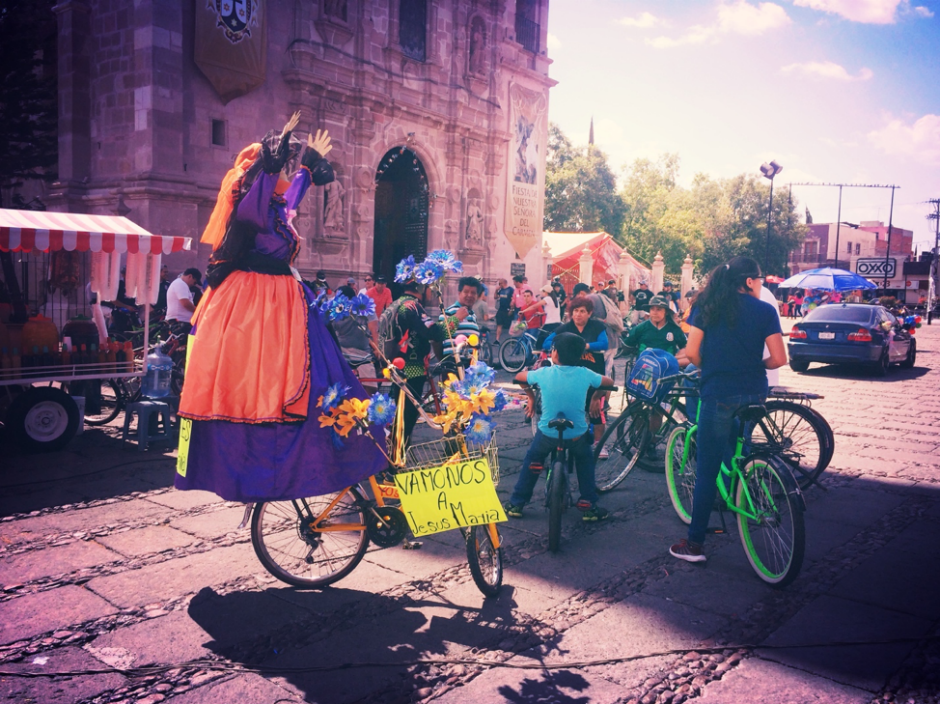Aryana Soliz is a doctoral candidate in Sociology and Anthropology at Concordia University. For twelve years she worked as a project coordinator for various non-profit organizations in Canada and in Latin America. In 2017, she helped co-found the Concordia Ethnography Lab,an interdisciplinary initiative aimed at promoting innovative ethnographic research. Her doctoral research focuses on cycling infrastructures and mobility justice in small and intermediate cities. Her research has been funded by the Social Sciences and Humanities Research Council of Canada.
Blog post
The importance of imagination in social research
 Photos by Aryana Soliz
Photos by Aryana Soliz
How can we use our imaginations, even in the dreariest of places?
Over the past several years, I have been working on a doctoral study about transportation infrastructures. In simple terms, I am interested in learning about people's experiences getting from point A to point B. For most people, daily mobility is the most boring or dreaded aspect of their everyday lives. From muggy bus rides to slushy sidewalks, transportation can be an utterly mundane and lackluster research topic.
So what am I doing writing a blog post about imagination?
I have found that imagination is essential for social researchers, both to thinking critically about our everyday lived experiences as well as to re-envisioning the world in more equitable and sustainable ways.
What is the sociological imagination?
The social sciences are well-known for their commitment to critical thinking, and the imagination rarely comes to mind when people think about disciplines such as sociology, anthropology or human geography. Yet in many social science departments, imagination is one of the first concepts we learn about in university.
As an undergrad, I remember learning about the sociological imagination — a concept coined by C. Wright Mills in 1959 referring to a deep understanding of how our own lived experiences relate to broader historical and social processes. In a sociological sense, imagination does not represent a detachment from reality. Rather, imagining involves consciously engaging with social realities in all of their complexities.
Although I explored these themes to some extent in theory classes, I was able to use my sociological imagination the most in my research methods courses. For my first research experience 'in the field' as an undergrad, I was tasked with interviewing students about their experiences taking public transit. It was, I remember thinking, the most boring research topic ever.
Yet, to my own surprise, I learned that my daily bus routine could provide a useful site to reflect on broader social issues, such as the privatization of public services as well as issues of overcrowding and urban sprawl. At the time, I was studying in Vancouver where the public bus system had been partially privatized.
Starting my analysis from the lived experiences of transit users allowed me to question the disjuncture between official discourse (i.e. the government's justification of privatization measures through a variety of statistics) and the situated knowledge of research participants (i.e. the awareness that transit services had worsened following the privatization of the transit system).

The sociological imagination allowed me to explore the connections between the everyday nuisances of taking the bus and wider public issues. Two university degrees later, I still find transportation to be the most fascinating 'boring' topic ever.
What is imaginative ethnography?
Now that I am approaching the end of my PhD studies, imaginative practices are still at the forefront of my research and writing. My research uses ethnographic methods, which in simple terms involves engaging with people in their daily lives on their own terms over an extended period of time. Ethnographers receive training on how to listen carefully to diverse voices, which is useful for surfacing silenced knowledge and imaginative perspectives.
In a recent book entitled A Different Kind of Ethnography, anthropologists Dara Culhane and Danielle Elliot explain that imaginative ethnography allow us to explore "the productive tensions that emerge from collusions of art, performance, ethnography and theory, and between activists, artists, scholars and our interlocutors as sites of possibility and transformation" (2017: xi). By engaging with diverse imaginative perspectives, researchers can help to propose new ways of understanding, interpreting and redesigning the built environment.
Rather than simply focusing on a desired future, imaginative ethnography is also deeply committed to accounting for neglected and forgotten viewpoints.
In my PhD fieldwork on cycling and walking practices in Central Mexico, the relationship between people’s experiences and the imagination was not always straightforward. By interviewing and following commuters along their travel routes for a period of two years, I learned about massive inequalities in the transportation system. For many commuters, cycling and walking are essential forms of transportation; however, with a huge rise in traffic accidents, the travel conditions have become extremely dangerous.
Although a lot of resources are going into sustainable transportation initiatives in city centres, proper infrastructures are lacking in peri-urban — or ‘outer-city’ — areas where a large proportion of working-class families rely on walking and bicycle transport. For many commuters, daily mobility can be a site of intense hardship.
In my experience, imaginative ethnography also needs to raise critical questions. Whose imagination counts in transportation planning? Who is included and who is being excluded? How can we make urban planning more inclusive and equitable?
During my fieldwork, I was fortunate to have the opportunity to work with local social movements like Aguas con la bici who are working to reimagine a more just transportation system. A key component of their work involves advocating for more inclusive planning processes to ensure that decisions are not only being made by a powerful few.
Working in collaboration with these types of organizations can provide researchers with important opportunities to make links between their research findings and local struggles for transformative change. Through both critical and creative thinking, imaginative research can help us to uncover neglected experiences and perspectives, to make links to broader socio-political issues and to work with others towards — hopefully — possibilities for more equitable and sustainable societies.

What role does the imagination play in your research or in your lived experience? Tweet me @AryanaMontreal, and let’s keep the conversation going.
References
Culhane, D., & Elliott, D. (Eds.). (2017). A Different Kind of Ethnography: Imaginative Practices and Creative Methodologies. University of Toronto Press.
Mills, C. W. (1959). The Sociological Imagination. Oxford University Press.
About the author


